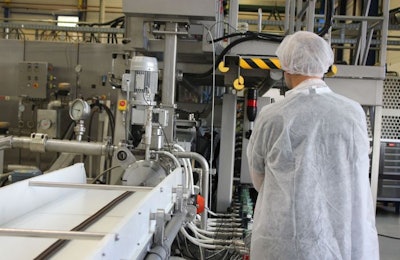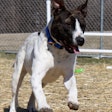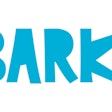
Integrating artificially intelligent (AI) computer technology with pet food extruder hardware gives a manufacturer greater control over efficiency and product quality, while increasing their ability to trace and correct problems. Rodolphe Sivet, project manager with Clextral, described how artificial intelligence allows machines to make decisions, control operating parameters and perform maintenance before it becomes a problem. Clextral is a pet food and animal feed processing machine manufacturer.
Sivet also discussed how computerized data collection stores a trove of information that can be used to improve line management and pin point when and where a problem arose. Clextral now integrates computers into the control processes of their twin-screw extruders and complementary machines, he said. As machines become intelligent, they can make decisions about how to best operate the pet food manufacturing devices. These learning machines ability to rapidly analyze extensive sets of data presage the artificially intelligent pet food manufacturing lines of the future.
Clextral incorporates the nascent ability of artificially intelligent machines in six stages of the pet food manufacturing process.
-
Data sharing
Throughout the manufacturing line, computerized line management allows data about the parameters of each step to be shared with other machines in the production process, as well as a centralized control hub. This allows workers to keep tabs on safety, both their own and of the finished product. Clextral’s data sharing model follows the ISA88 standard for inline and vertical communication. The data acquired by the machines is then stored in a database to allow further analysis and troubleshooting.
-
Process performance
In the barrel of Clextral’s extruders, computerization allows precise control of the vacuum and steam injection parameters to either increase or decrease the density of the finished product. That allows a pet food manufacturer to reach their desired product characteristics with less trial and error, while allowing a range of recipes and process variations.
-
Auto-learning
Also in the barrel, computers monitor the various factors influencing the materials within. The computer then automatically learns how to alter the heating and cooling system to reach a desired point using Clextral’s Advanced Thermal Control (ATC) system. The ATC system allows a 70 percent stability improvement and 20 percent savings in energy usage, said Sivet. The ATC system can bring the extruder temperature to with five degrees of a set point in approximately five minutes.
-
Smart decision
When problems do arise, an artificially intelligent system can reduce the amount of down time for a pet food production line, which can waste hours of time. Clextral’s Anti-blocking System (ABS) monitors for signs of an impending blockage. When a potential problem is observed, the computer makes the decision to initiate an anti-blocking procedure, without the need for human oversight.
-
Smart control
For start-up and shut-down of pet food extruders, computers can optimize the efficiency of the process. Computer-assisted procedures help make start-up and shut-down go smoothly regardless of operator skill. That reduces wear on machines and decreases waste. Clextral’s smart controls allow for either step-wise or ramping patterns in start-up.
-
Predictive maintenance
Artificial intelligence and computerized data collection help keep extruders running efficiently by predicting when maintenance needs to be done to prevent costly breakdowns. Sensors monitor for deviations from the norm, then relay that data to Clextral engineers via cloud computing. Human experts can then provide advice on how to troubleshoot a deviant device.
















